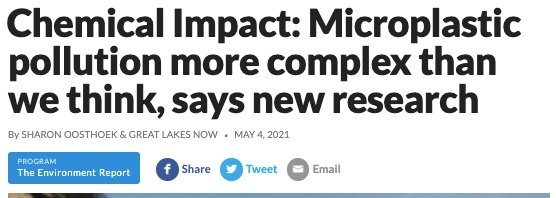
The Perils of PVC Plastic Pipes
All types of water pipes, not only lead, can release chemicals into drinking water. Plastic pipes, which are constructed from potentially dozens of different chemicals, release more contaminants into drinking water than unlined metal pipes, which are built of few materials. Communities need to understand the potential health risks associated with different water pipe materials so that they do not end up with what’s known as a “regrettable substitution,” or a situation in which a selected alternative turns out to be just as bad, if not worse, as the original option.

PVC Poison Plastic
Every day, PVC production exposes communities around the country to vinyl chloride and other PVC chemicals, a result of the inadequate U.S. regulatory system that allows the use of the most hazardous chemicals and plastics. This investigation uncovers the largest polluters of vinyl chloride in the U.S. and maps the communities regularly exposed to this dangerous chemical and its waste products.

The Minderoo-Monaco Commission on Plastics and Human Health
The Minderoo-Monaco Commission on Plastics and Human Health has produced an extensive analysis of the plastics’ negative impacts on: i) human health and well-being focusing on vulnerable populations, ii) on the global environment focusing on ocean health, and iii) the economy. The report includes highly valuable sustainable solutions that can be implemented by governments and industries to minimize the negative consequences of global plastic contamination This is an urgent problem that must be addressed in the worldwide agenda in parallel to climate change, as they are closely interconnected.

Invisible, Unbreakable, Unnatural: PFAS Contamination of U.S. Surface Waters
While PFAS compounds are believed to be ubiquitous in U.S. waterways, no nationwide surface water quality survey exists. As a result, the levels and effects of PFAS are unknown for many rivers, streams, lakes, and other U.S. surface waters that serve as drinking water sources, recreational waters, and fisheries. To address this troubling lack of information about the presence of, and dangers posed by, PFAS in U.S. surface waters, Waterkeeper Alliance contracted with Cyclopure, Inc., a materials science and environmental engineering firm headquartered in Illinois, to help conduct a monitoring project in which we worked with more than 100 Waterkeeper groups across the United States on an unprecedented initiative to test U.S. surface waters for PFAS contamination.

The Price of Plastic Pollution: Social Costs and Corporate Liabilities
Plastics harm people, the environment, and the economy (“social costs”). Some social costs will inevitably turn into compensation claims against the plastics industry (“corporate liabilities”), which may present these claims to their insurers. In this report, for the first time, we provide quantitative estimates of both the social costs and the corporate liabilities emerging from all forms of plastic-related pollution.

Missing the Mark: Unveiling corporate false solutions to the plastic pollution crisis
For the first time, Break Free From Plastic has recorded the plastic solutions projects of our seven top plastic polluters, and classified the projects according to whether they are real solutions or false ones.

Reuse wins: top findings show reuse beats single-use every time
Reuse Wins shows how a new reuse economy is emerging to replace the use of single-use products in food service.

High frequency of micro- and meso-plastics ingestion in a sample of neonate sea turtles from a major rookery
Evidence points to plastics ingestion being an important source of population-level effects in neonate sea turtles.

Chemical Impact: Microplastic pollution more complex than we think, says new research
Microplastic pollution has been building up in the Great Lakes for at least four decades, but our understanding of its impact on fish and other aquatic creatures is only just catching up.

